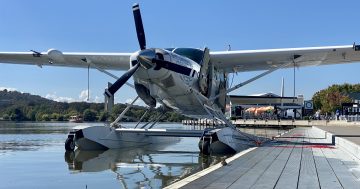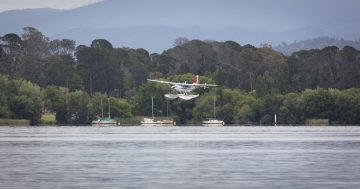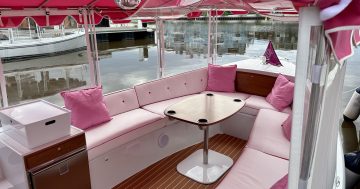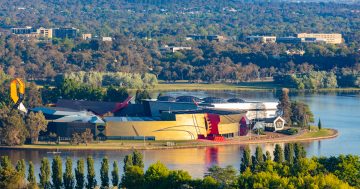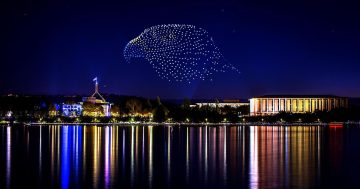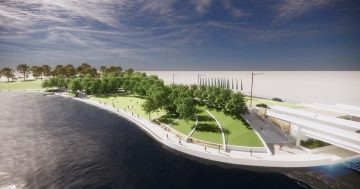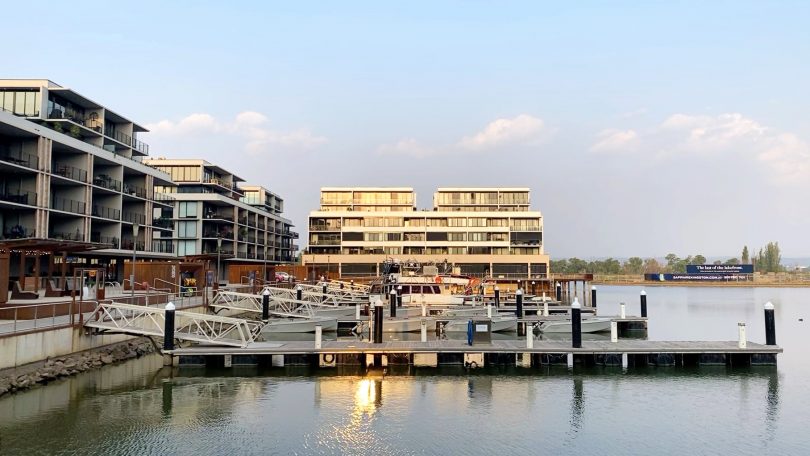
Kingston Foreshore: why not catch a water taxi to town from here? Photo: File.
This week’s first seaplane landing on Lake Burley Griffin may be a harbinger of a less ornamental city centrepiece and more of a working waterway.
Like the big country town that we are, Sydney Seaplanes’ test flight on Tuesday was greeted as the novelty it undoubtedly was but if the enthusiasm of NCA boss Sally Barnes is any indication, there is a very good chance that the daily services proposed will become a reality next year.
If it does, it begs the question about what other uses the lake could reasonably tolerate, without impacting on its aesthetic and therapeutic value.
As Ms Barnes said on Tuesday: “We need the lake to be the heart of the city, we need the heart to pump but we definitely don’t want the heart to pass out from overuse.”
The lake is hardly not used but it has been kept as a mainly recreational or event-focused body of water enjoyed by rowers, paddlers and sailors, and the odd person who may plunge into its icy waters, as well as being reserved for Australia Day or New Year’s Eve celebrations when boats and jet skis are allowed to tear up its waters.
But as the city moves towards the lake and people take up residence, there the opportunities arise for it to be used for transport, like other cities with a lake, such as Geneva.
It isn’t a new thought.
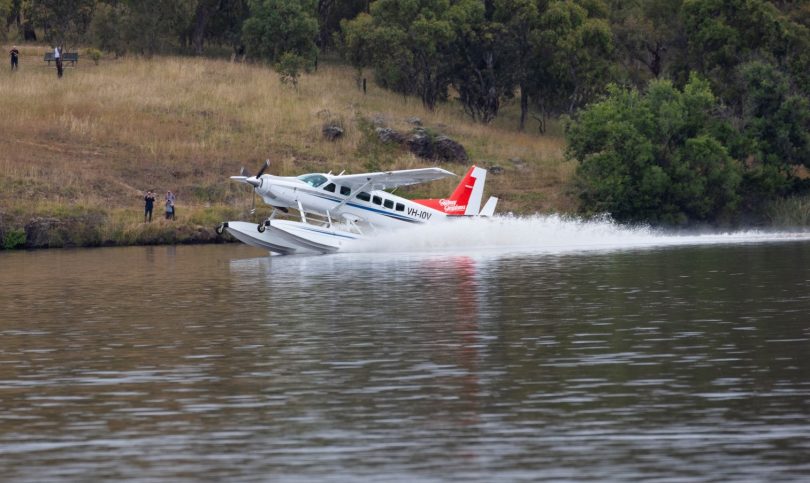
Could a seaplane service in 2021 be the start of a new era for Lake Burley Griffin? Photo: Thomas Lucraft.
A group back in 2005 floated the idea of a water taxi service and there have been ferry cruises on the lake for years. The ACT Government’s City to the Lake masterplan back in 2014 envisaged such services at West Basin.
It remains a bit of a pipe dream but perhaps the time is approaching where we have a critical mass of potential passengers, and a city more open to the possibility.
We already have the Kingston Foreshore and a growing number of people moving into that area, and like it or not, residential development of some kind is planned for West Basin. Along Parkes Way and Constitution Avenue, apartment complexes are rising within walking distance of the lake.
There will soon be a significant population of people living near the lake working in the city or the Parliamentary Triangle whose journey to the office would be appreciably shorter and more pleasant if it were a quick trip by water taxi, smaller than a ferry and less of an impact on the lake.
Imagine living in Kingston and the ease of boarding a water taxi with capacity for about half a dozen passengers and crossing the lake to the city. Or wandering down to Rond Terrace to slip across to the NGA.
For tourists, the convenience plus enjoyment of a lake transit system could be very attractive.
For those concerned about the pollution risks and noise concerns of motorised transport on the lake, the vessels need not even be fossil fuel-driven.
Obviously for private operators there needs to be a viable business case but maybe Transport Canberra could add water taxis to its network, at an appropriate fare and using the MyWay card or its successor.
The size, numbers and frequency of vessels would also need to fit with the lake’s capacity.
The idea may still be a stretch for some but if we allow a seaplane service then we should have a real discussion about what else will enhance our lives around the lake we love, and plan for it properly.












